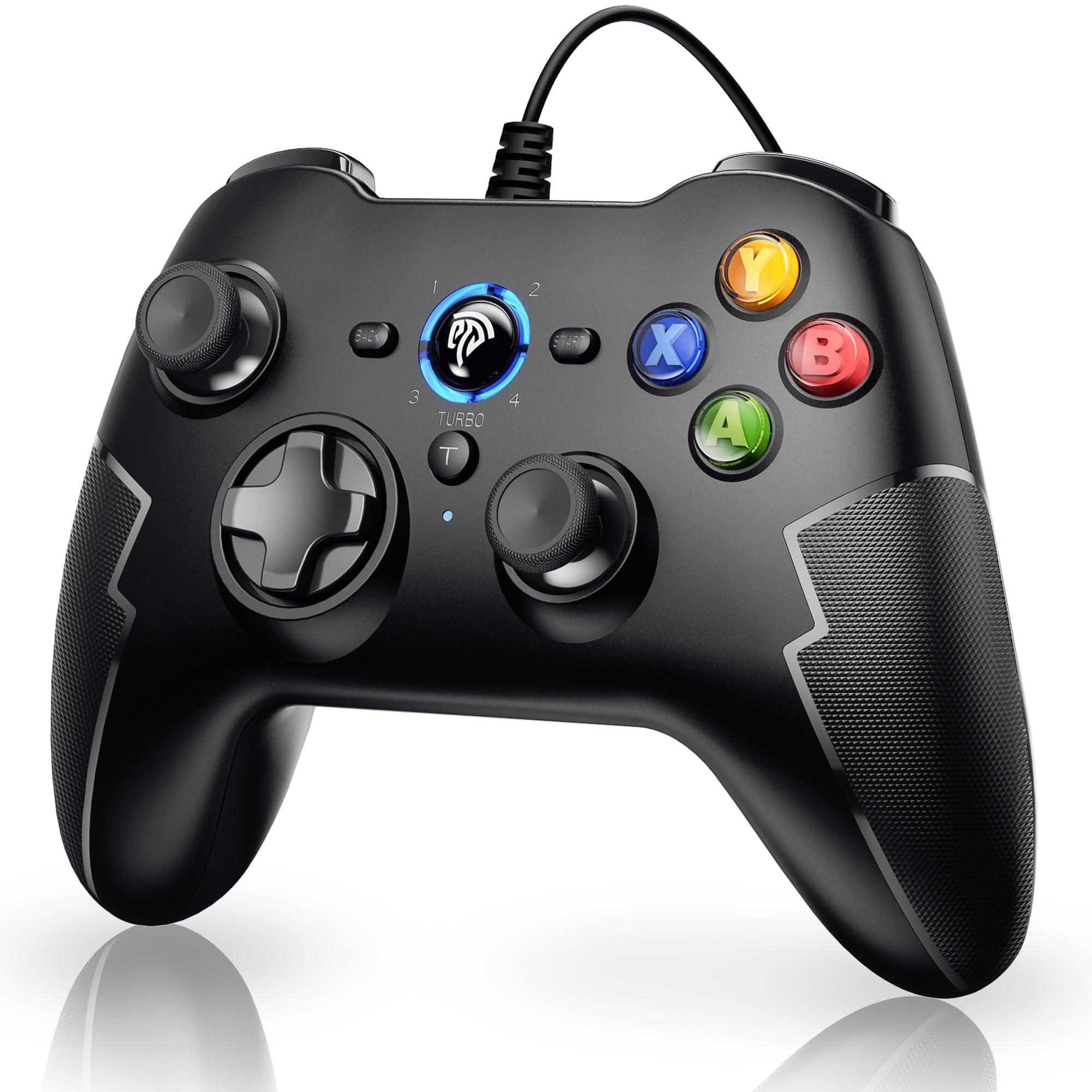Table of Contents
- The Birth of Game Controllers and Their Early Influence
- Innovation Through the Ages: Milestones in Controller Design
- Ergonomics and the Art of Comfort in Modern Gaming
- The Role of Technology in Shaping the Future of Controllers
- Choosing the Right Controller: What Gamers Need to Know
- Q&A
- To Conclude


The Birth of Game Controllers and Their Early Influence
In the nascent days of video gaming, the concept of controlling on-screen action was an untamed frontier. Pioneering designs like the Paddle and Joystick offered a rudimentary form of interaction, shaping the earliest experiences in digital play. These early game controllers symbolized a leap from static entertainment to interactive engagement, allowing players to influence the outcomes of games. Many of these early devices were simple yet effective, providing directional control that was easily mapped to the basic graphics of the era.
- Paddle: Perfect for games like “Pong,” offering rotary control.
- Joystick: Featured in iconic consoles such as the Atari 2600.
- Keypad: Introduced additional input options for more complex games.
With these early designs, game developers were inspired to envision new ways to challenge and entertain players. The relationship between console manufacturers and the unique controller designs they introduced played a significant role in the market. While simple by today’s standards, these initial innovations laid the groundwork for one of gaming’s foundational principles: seamless and immersive player control. As developers pushed technological boundaries, the controller’s role expanded beyond merely moving characters to executing complex commands, nurturing the creative relationship between hardware and gameplay.


Innovation Through the Ages: Milestones in Controller Design
From the humble beginnings of simple joysticks to the sophisticated multi-input devices of today’s consoles, the journey of game controllers has been marked by a series of groundbreaking milestones. In the early days, the Atari 2600’s joystick, with its single-button simplicity, set the stage for what was to come. As technology advanced, so did the desire for more complex interaction, giving rise to the Nintendo Entertainment System (NES) controller, which introduced the now-iconic A and B buttons along with a directional pad. This design became the blueprint for numerous future innovations.
The 1990s welcomed a wave of experimentation that pushed controller design into uncharted territories. Sony’s PlayStation introduced the DualShock controller, a major departure from traditional designs with its two analog sticks and vibration feedback capabilities, which became a standard expected by gamers. Meanwhile, Sega Dreamcast took a different approach by incorporating a visual memory unit, allowing an extra level of interactivity and personalized gameplay experiences. These developments highlighted a shift toward more immersive and tactile gaming experiences, emphasizing not just utility but also feedback and comfort.
Modern controllers combine form and functionality to offer unparalleled experiences. Microsoft’s Xbox Adaptive Controller is a testament to inclusivity, designed to accommodate a wide range of physical abilities, setting new standards in accessibility. On the other hand, Nintendo Switch controllers provide versatility with detachable Joy-Cons that allow for multiple configurations, catering to both solo and multiplayer scenarios. These sophisticated devices redefine what is possible in gaming interaction, fueling creativity and pushing the boundaries of what controllers can achieve.


Ergonomics and the Art of Comfort in Modern Gaming
The evolution of game controllers reflects a keen understanding of player comfort and the importance of ergonomics in enhancing the gaming experience. Over the years, designers have continuously finetuned the shape, size, and button placement based on human anatomy and how gamers naturally interact with devices. This progression has transformed controllers from simple, rigid devices to sophisticated peripherals engineered for optimal comfort during extended gaming sessions.
- Intuitive Designs: Controllers now feature curves and grips that mimic the natural resting positions of human hands.
- Button Ergonomics: Key to player interaction, their placement ensures easy access and minimizes finger strain.
- Sensitive Triggers: Designed to respond to varying pressure, enhancing game dynamics and player feedback.
To better illustrate the transformation of game controllers, consider the following features over time:
| Era | Controller Feature |
|---|---|
| 1980s | Simple D-Pad & Limited Buttons |
| 1990s | Analog Sticks & Improved Ergonomics |
| 2000s | Vibration Feedback & Wireless Capability |
| 2010s | Touch Pads & Motion Sensing |
This journey highlights how the synergy of technology and ergonomics continually reshapes the way we interact with our games, ensuring that players not only connect with their virtual worlds but do so comfortably and effectively.


The Role of Technology in Shaping the Future of Controllers
In recent years, technology has played an unprecedented role in transforming how we interact with game controllers. One of the most notable advancements is the integration of haptic feedback, which has elevated the tactile experience in gaming. With devices like the PlayStation 5’s DualSense controller, gamers are no longer just passive players; they feel every explosion, every crunch of the gravel, and even the sensation of drawing a bowstring. This level of immersion represents a massive leap from traditional rumble motors, allowing developers to create more engaging and emotionally resonant gaming experiences.
Moreover, the rise of wireless technology and Bluetooth connectivity has liberated gamers from the constraints of tangled cables. Gone are the days of being tethered to the console; now, players can enjoy a seamless connection without compromising on responsiveness. This wireless revolution is complemented by advanced battery technologies, which provide extended playtime and quick charging capabilities. Some modern controllers also incorporate motion-sensing technology, allowing for more intuitive gameplay that can easily adapt to various genres, from sports to adventure and beyond.
Additionally, the incorporation of AI and machine learning into controllers is opening up new possibilities. Controllers are beginning to offer personalized settings based on a player’s habits and preferences, making each session more tailored and enjoyable. Here’s a glimpse at some features influenced by AI:
- Adaptive Controls: Algorithms adjust settings dynamically for optimized performance.
- Smart Feedback: Predicts required intensity levels for haptic feedback.
- Error Prevention: Analyzes common player mistakes and suggests corrections.
| Feature | Description |
|---|---|
| Custom Mappings | AI creates profiles for different games. |
| Gesture Recognition | Interprets hand motions for in-game actions. |
Choosing the Right Controller: What Gamers Need to Know
As the landscape of gaming has evolved, so too have the controllers that players use to navigate their virtual worlds. The ability to choose a controller that fits both your gaming style and ergonomic needs is crucial. Size and shape often play a pivotal role in this selection process. Larger controllers may offer more stability and comfort for players with bigger hands, whereas those with smaller hands might find compact controllers more manageable. Additionally, the weight of the controller can impact gameplay over extended periods. Lightweight models are easier on the wrists, while heavier options might provide a more substantial feel, adding to the immersion of gameplay.
Another consideration is the technology embedded within the controller. Today’s advanced controllers come equipped with features such as haptic feedback, programmable buttons, and customizable lighting. Haptic feedback, for instance, adds a tactile layer to gaming, allowing gamers to feel the roar of an engine or the impact of a battle. On the other hand, programmable buttons can offer a significant advantage, enabling players to configure buttons for rapid execution of in-game commands. Here’s a brief overview of features offered by different brands:
| Brand | Haptic Feedback | Programmable Buttons | Custom Lighting |
|---|---|---|---|
| Brand X | Yes | No | Yes |
| Brand Y | No | Yes | No |
| Brand Z | Yes | Yes | Yes |
Lastly, ensure compatibility with your chosen platform. Many controllers function across multiple systems, but not all features may be fully supported. Consider connectivity options as well, ranging from Bluetooth, wireless, to USB-C connections. Bluetooth offers freedom from cables, ideal for gamers who play from a distance, while wired USB-C connections are often favored for no-lag gaming experiences. Your choice should seamlessly integrate with your gaming setup, enhancing your overall experience rather than obstructing it. Ultimately, the right controller can profoundly affect not only performance but also enjoyment in the gaming realm.




0 Comments